Teufel Decoderstation 5

Let's start with the easier to access: The Decoderstation.
After opening up the housing and performing some reverse engineering of the button connection, I quickly found GND, 5V (used for some LEDs) and the switch contacts. One contact is connected to ground, the other is pulled high. Pushing the button pulls the second contact low. This is what my addition has to do.
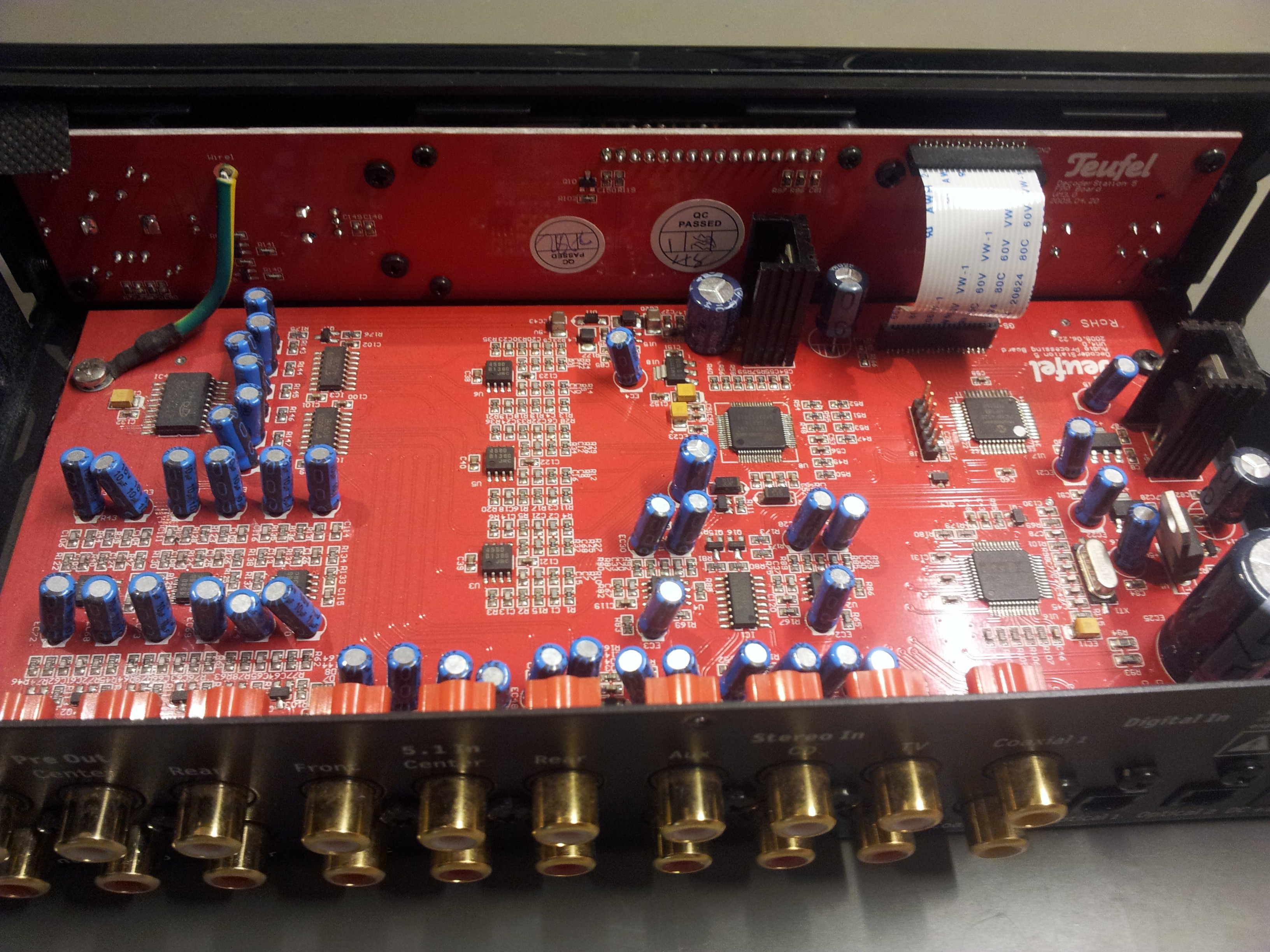
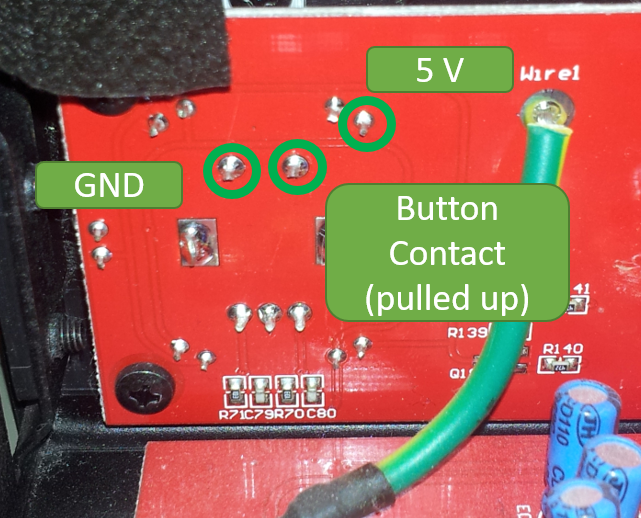
My first thought to solve this problem went to a NE555 circuit or similar. But as I have some small MSP430 boards lying aroung, I decided to use this MCU instead. The main reason is to enable the future feature of controlling the volume and menu as well. Add a ESP8266 and the receiver is smarty-fied.
The plan is to use following circuit to pull down the switch contact after 1 sec for 0.5 sec and then go into Low Power Mode.

I quickly soldered a board and found a nice way to mount it: Re-use a already exisitng hole + spacer.
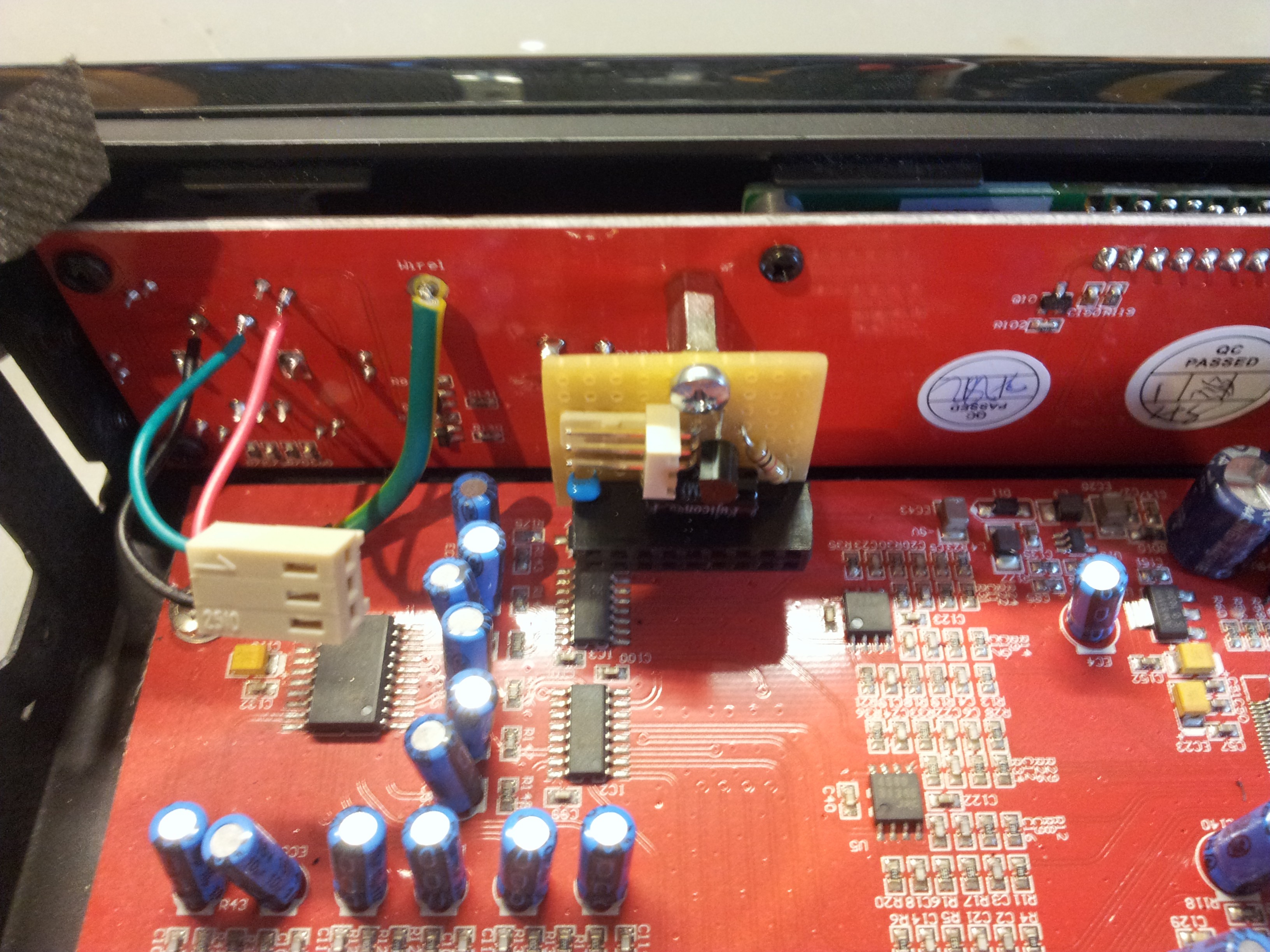
And this it, the fully functional auto-on hack for the receiver:
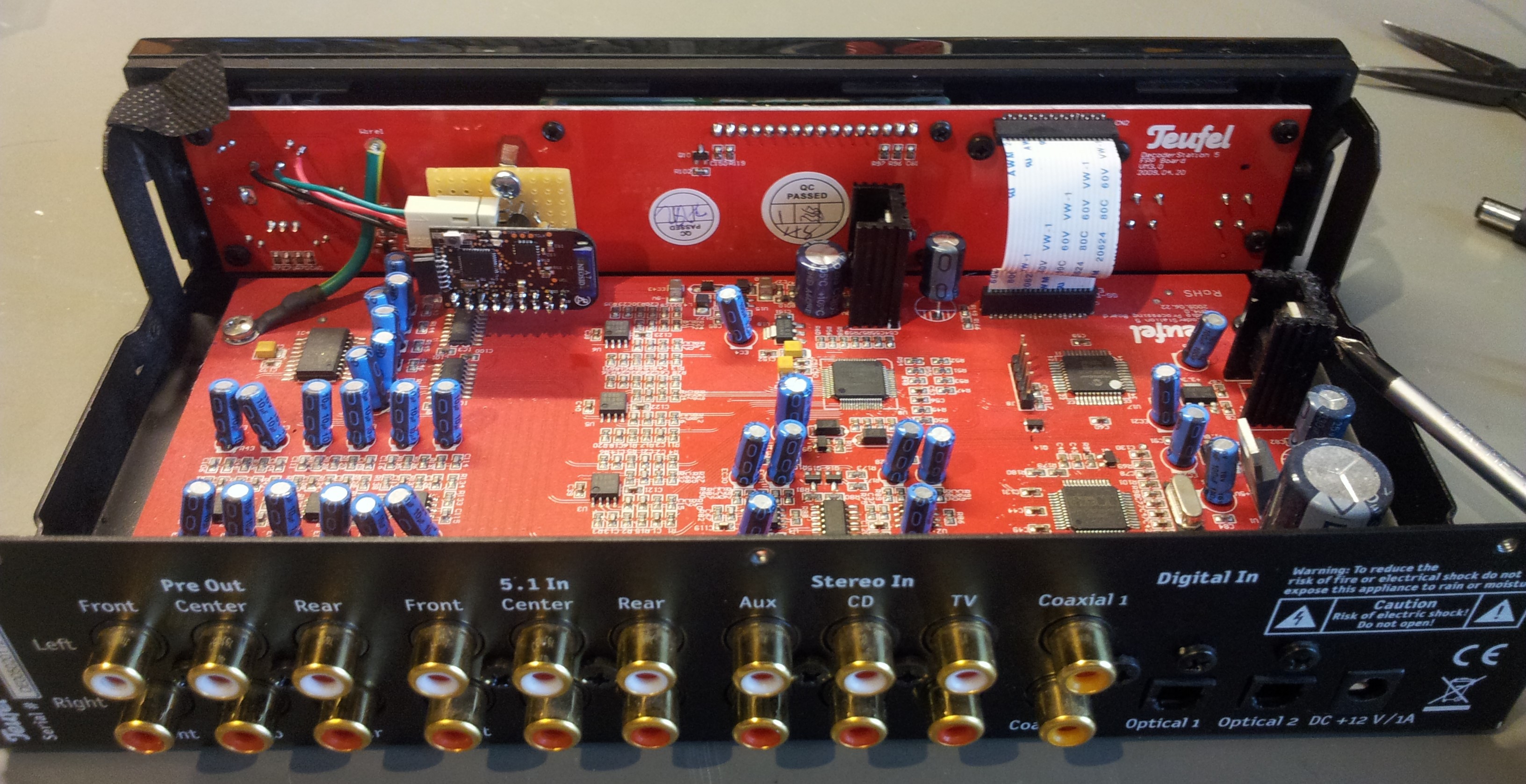
Teufel Subwoofer
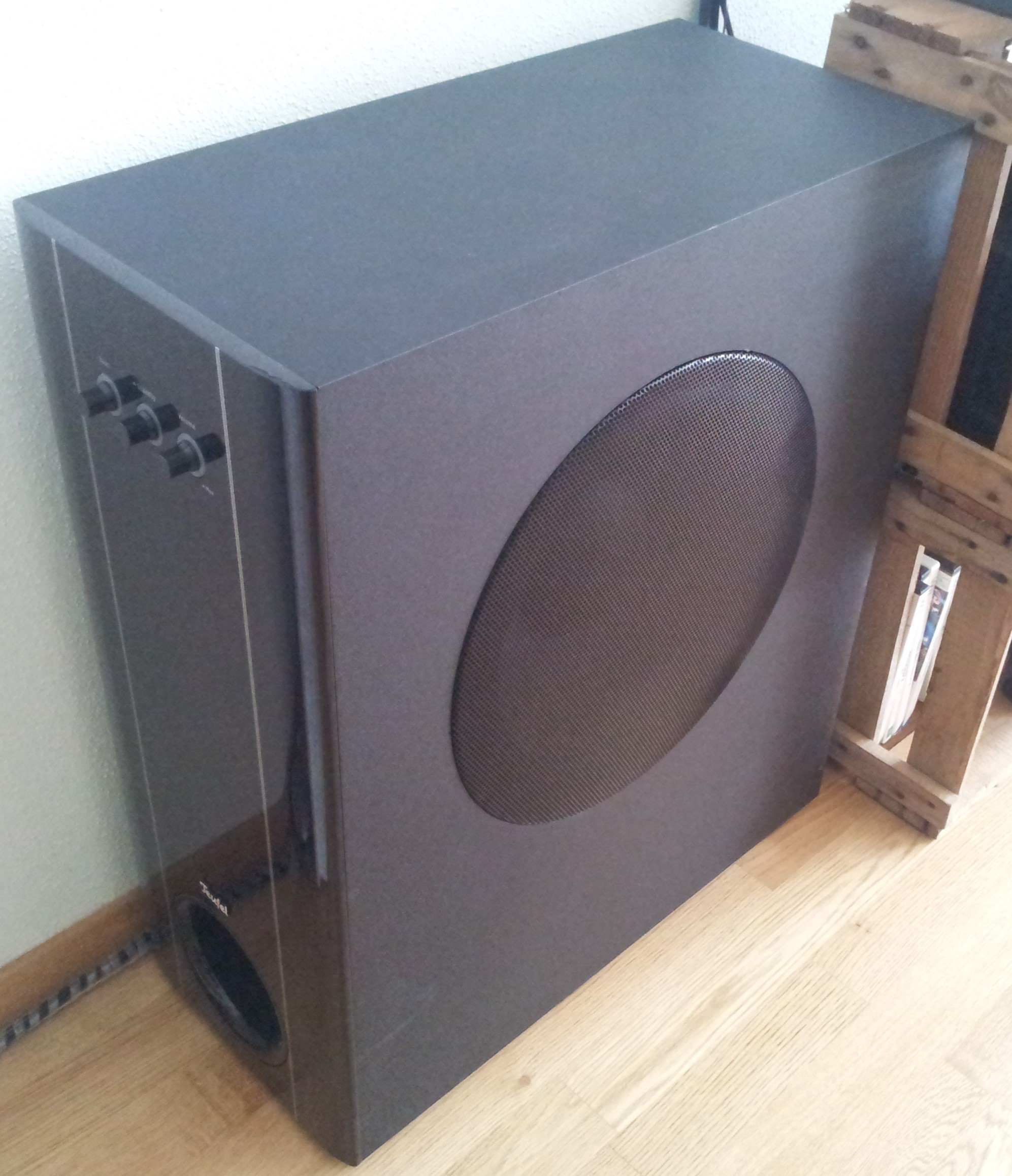
Next I opened the subwoofer. It has a panel on the back side:
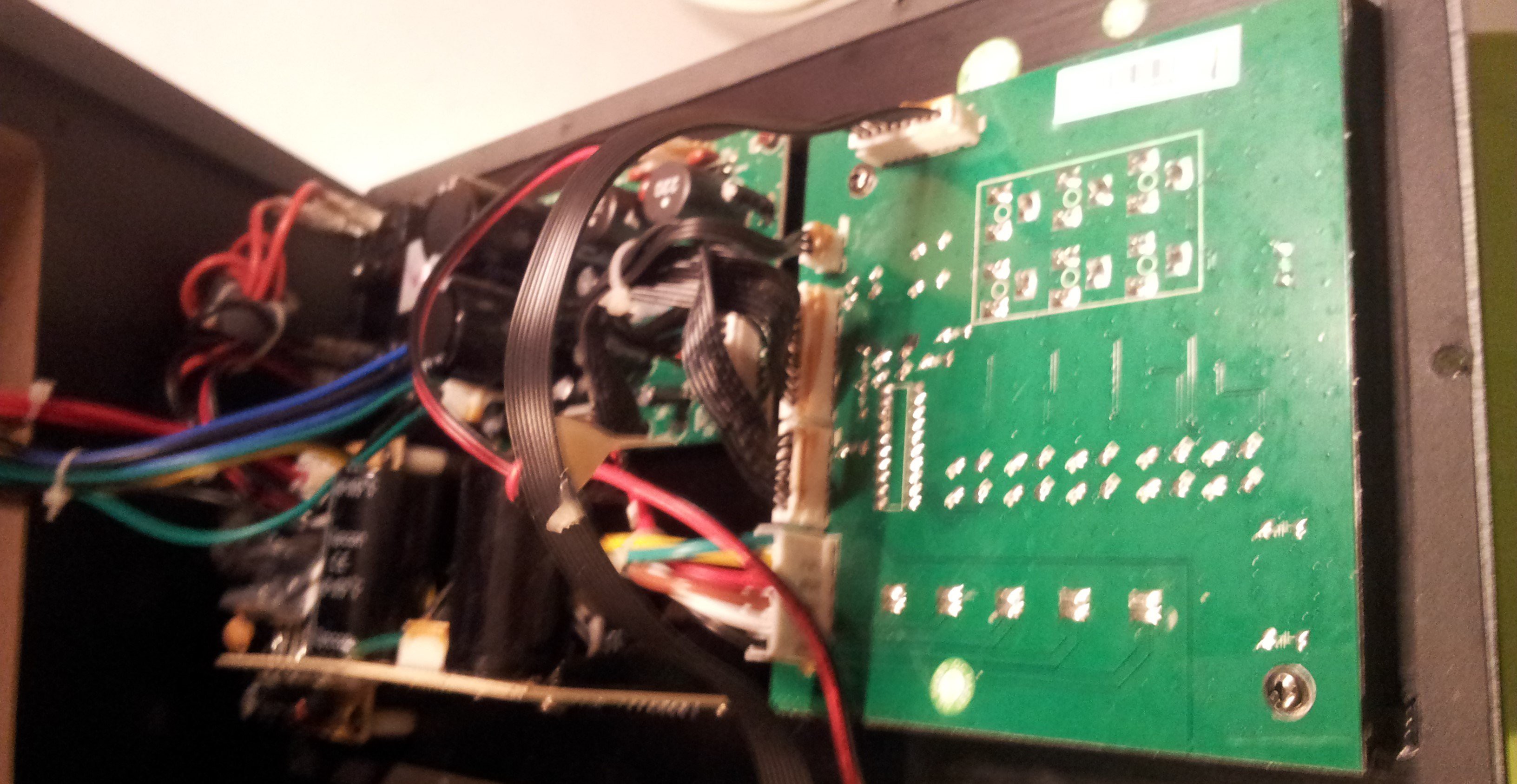
This panel contains almost all electronics and a cable going to the front buttons (including the on switch), but unfortunatelly the communication is over I2C, which i do not want to reverse (for simplicity). Also unfortunate, the front panel is hard to access. So I removed to speaker and then the front panel:
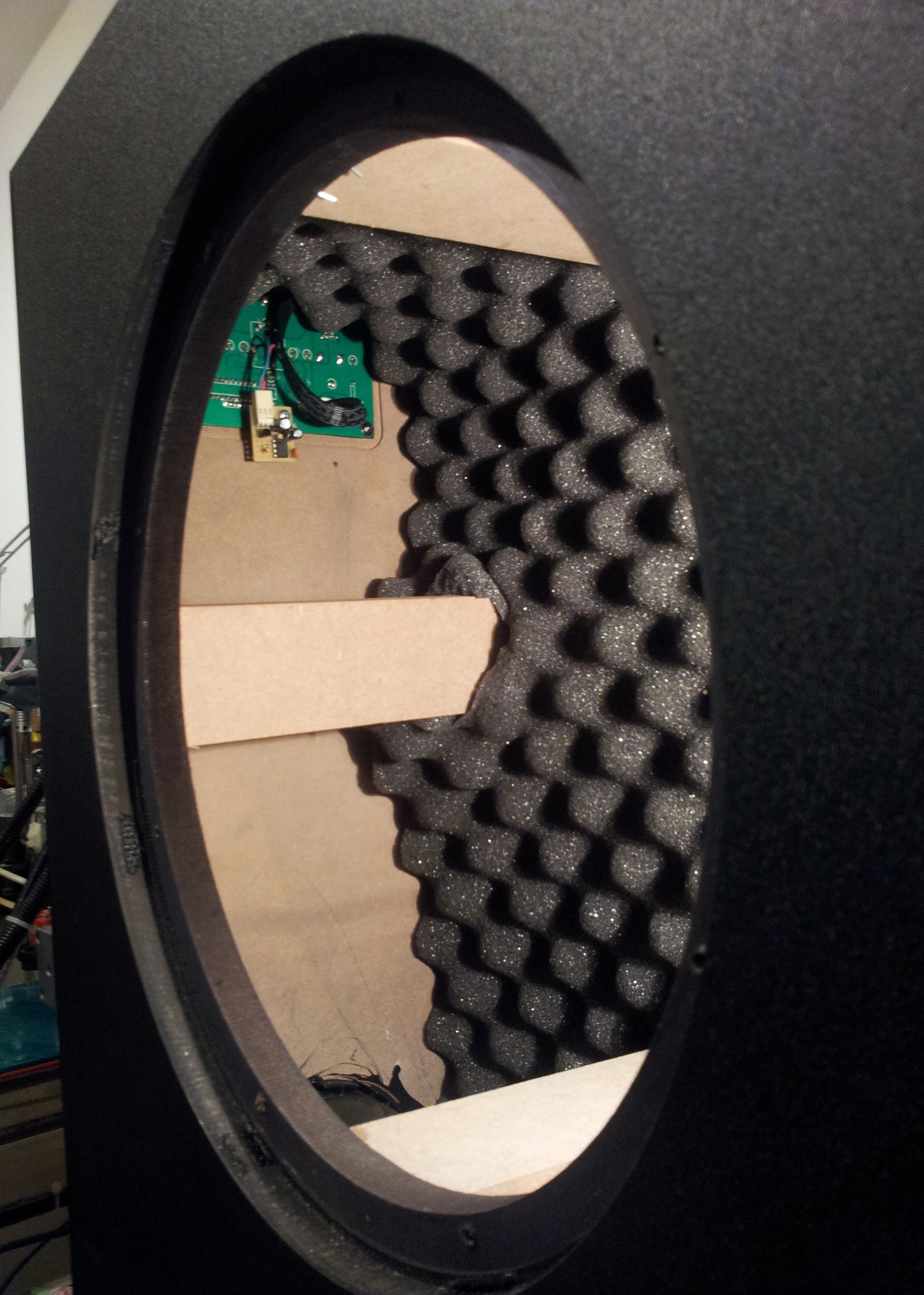
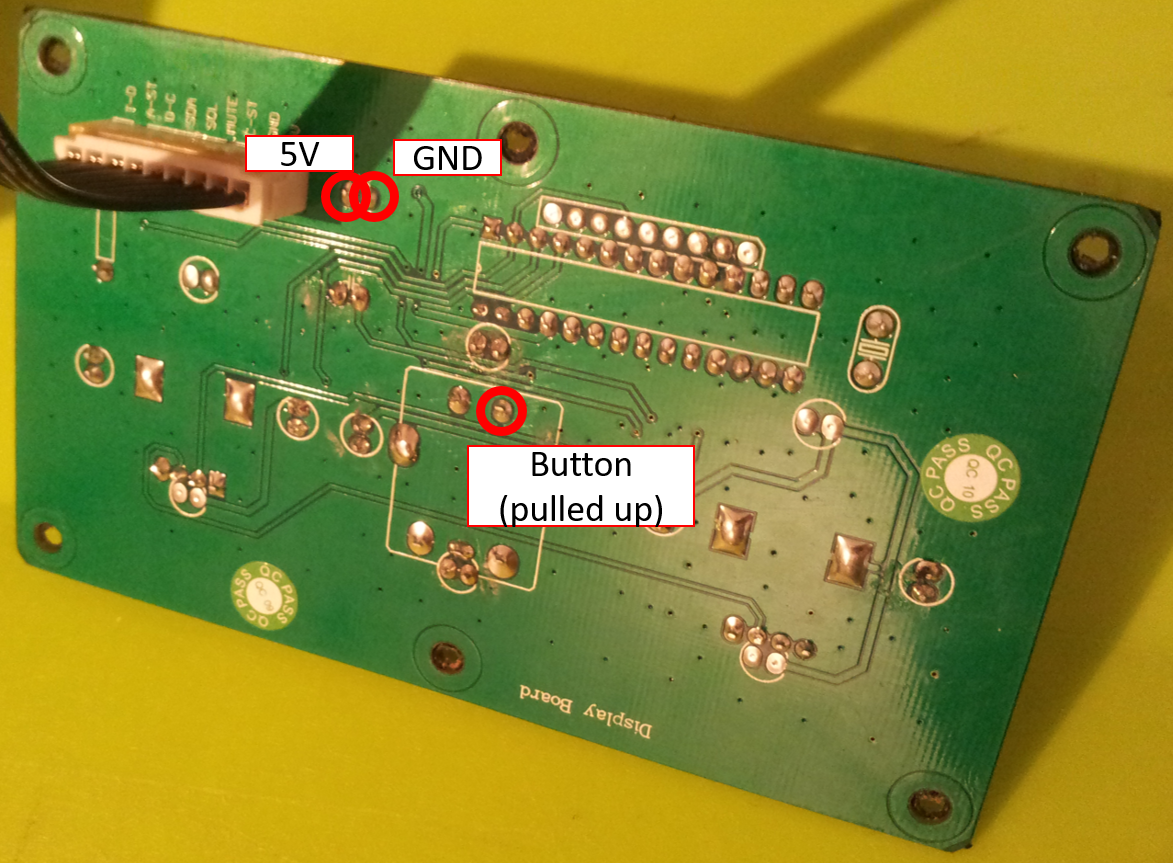
The button contacts work the same as in the receiver. Since The subwoofer will always stay dumb, I don't use a MCU here. A NE555 with some non-standard curcuitry is enough:
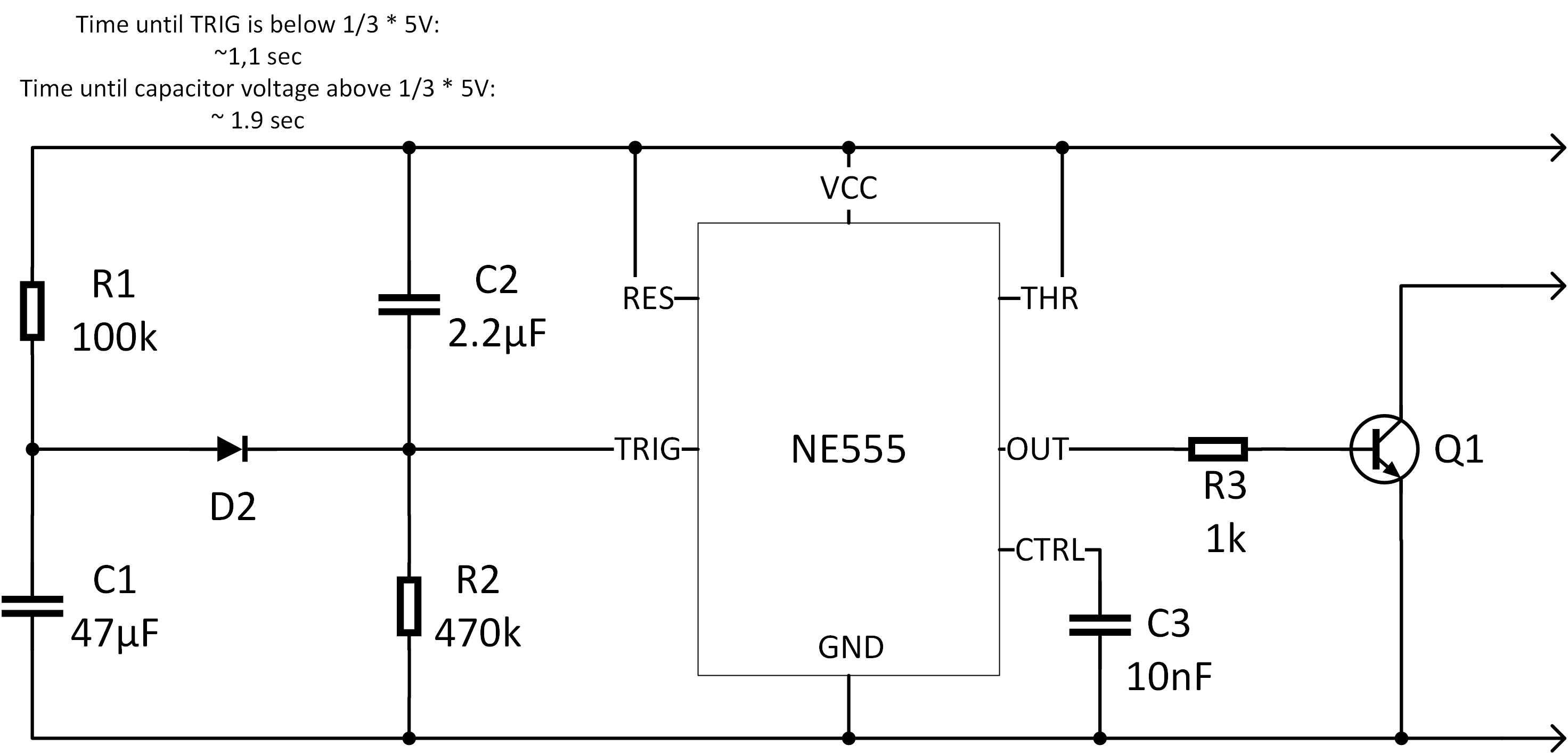
After power, both C1 and C2 are slowly charging. The voltate at TRIG drops from 5V to below 1/3 due to C2 and R2 within about 1.1 sec. This triggers the output and 'pushes' the button.
After about 1.9 seconds, C1 gets charged above 1/3 of 5 V and therefore slowly raising the voltage at TRIG to disable the output, 'releasing' the button.
It would have been easier to just use two NE555, one for delay, the other as one time shot, but this is nice and small:
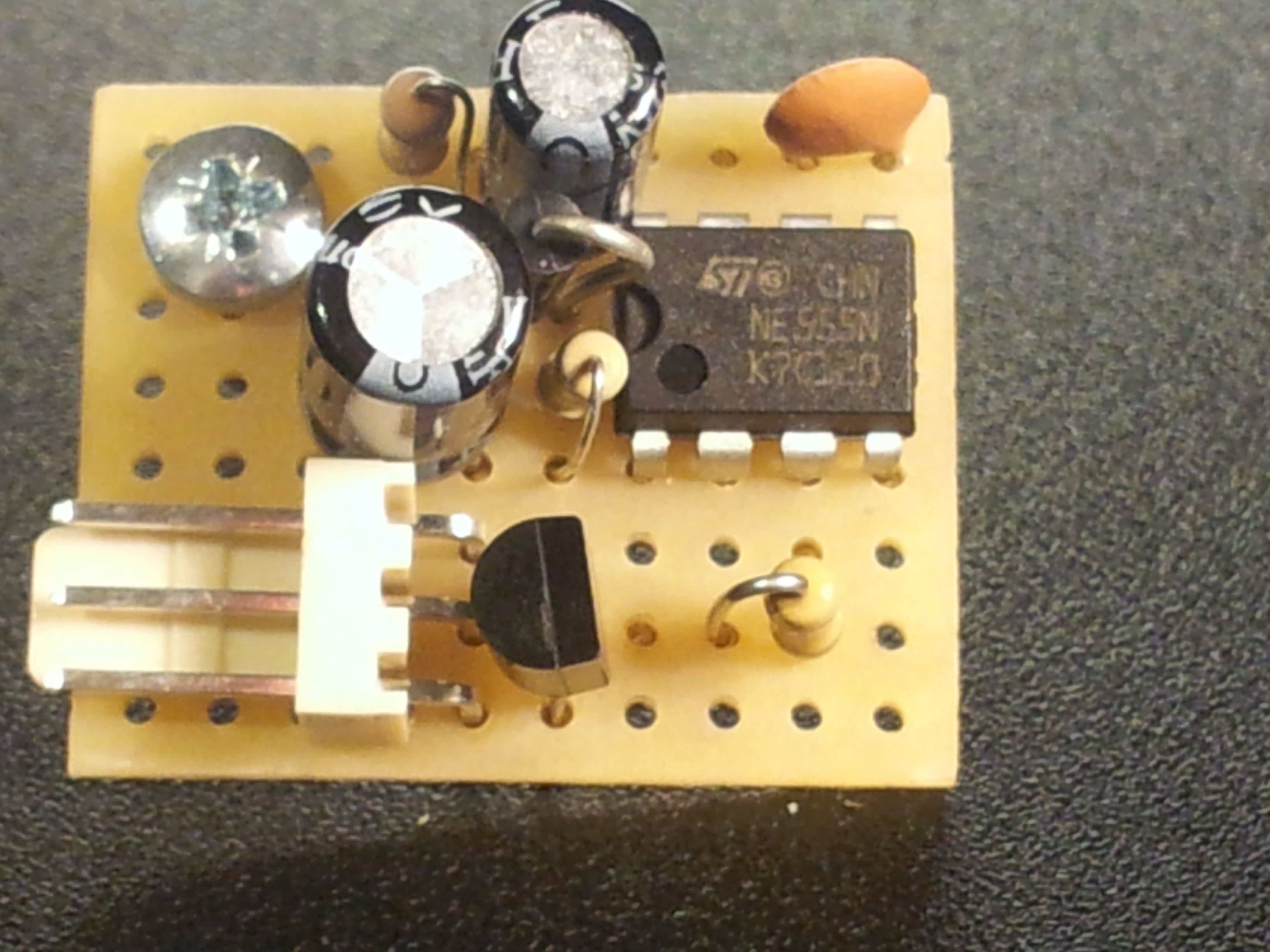
Testing, mounting and testing again, it works and looks not too bad:
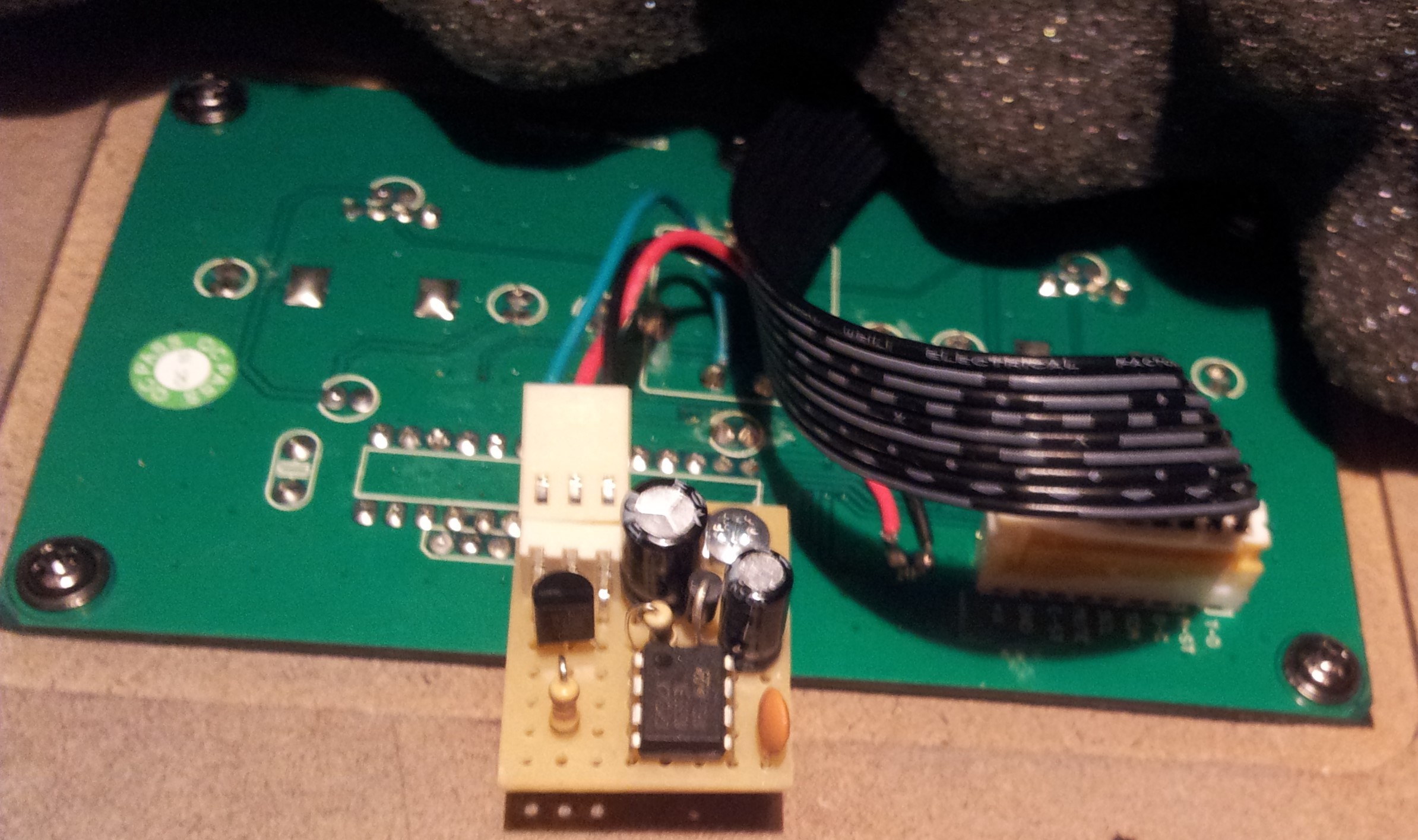
Possible changes for V2:
- Add control for volume knob of receiver, this also enables going through the menu (e.g. changing channels)
- Add ESPx to enable WIFI control
- Add to existing home network, control via Raspberry Pi and/or smartphone, so the remote would not be needed anymore
 Doubleyou
Doubleyou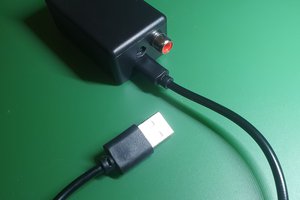
 Iulian
Iulian
 bryan.lowder
bryan.lowder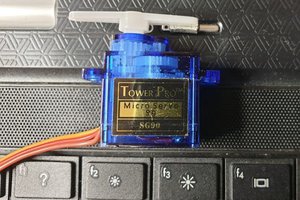
 Emilio P.G. Ficara
Emilio P.G. Ficara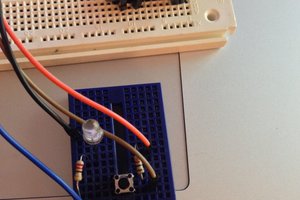
 dougal
dougal